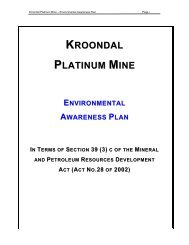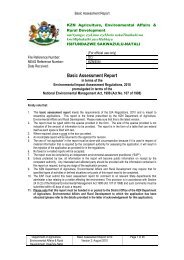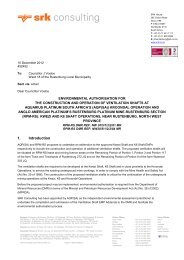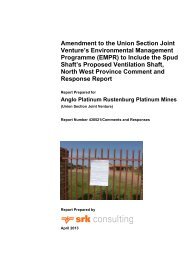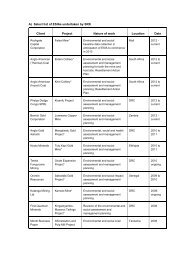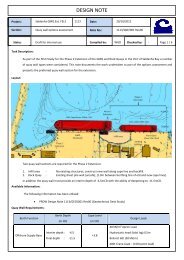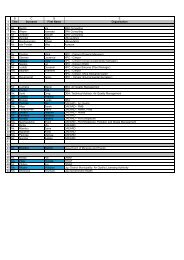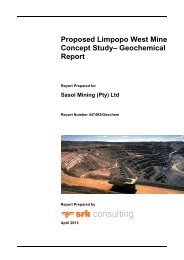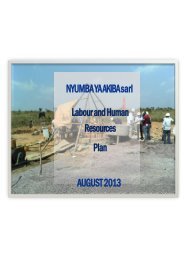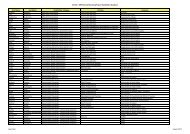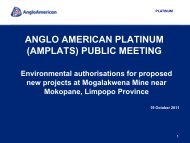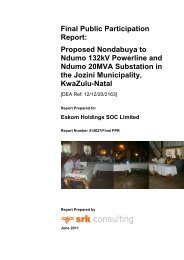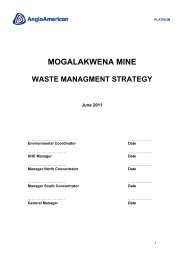Biodiversity (1 - SRK Consulting
Biodiversity (1 - SRK Consulting
Biodiversity (1 - SRK Consulting
Create successful ePaper yourself
Turn your PDF publications into a flip-book with our unique Google optimized e-Paper software.
The remaining four threatened species are expected to be erratic visitors when high<br />
rainfall creates productive conditions (plant cover, seeds, insects, small vertebrates).<br />
Some are resident species in the general area of the Northern Cape whose ephemeral<br />
habitats on the property are also only likely to become suitable after good rains, the<br />
Chestnut-banded Plover visiting and possibly feeding and breeding in/around the more<br />
saline pans and Sclater's Lark using large grass seeds on the few chalky gravel<br />
patches. The Kori Bustard generally prefers higher rainfall areas with more ground<br />
cover and productivity, so although they do sometimes visit the area it seems unlikely<br />
that they breed there. Finally, the Black Harrier is expected only as an erratic, nonbreeding<br />
winter visitor to the area from the western Cape, again most likely when good<br />
rains have produced abundant small animals.<br />
9.5. General Conclusions<br />
The main conservation objectives for birds on Portion 3 of the farm Zuurwater 62 are to<br />
retain untransformed the mountains and their gravel skirts, the deep red sands and<br />
dunes, and as much as possible of the Koa River washes and pans, together with<br />
whatever of the adjacent grassy plains is not transformed by the proposed solar PV<br />
electricity generation facility. The mountains, pans and dunes should be designated<br />
sensitive areas and excluded from any development, apart from low densities of<br />
livestock grazing. Of 169 bird species recorded and/or expected on Zuurwater, nine are<br />
threatened species, of which the resident, near-endemic, habitat-specific and rangerestricted<br />
Ludwig's Bustard and Red Lark are both considered Vulnerable by IUCN<br />
criteria. The PV array is not considered a direct threat to any bird species, given its<br />
limited impact in space (



